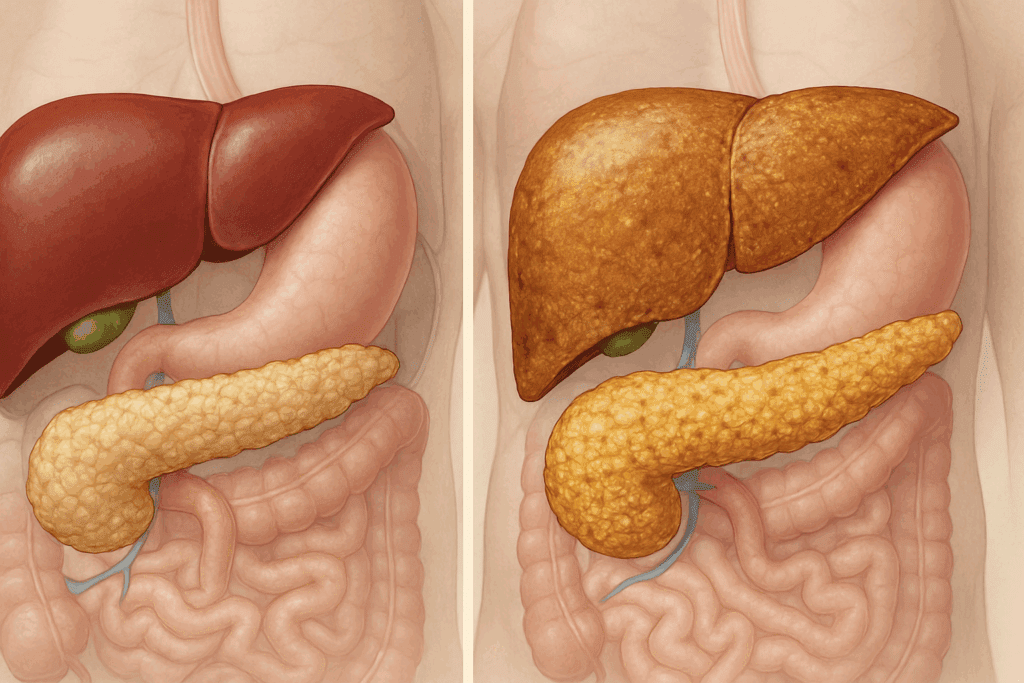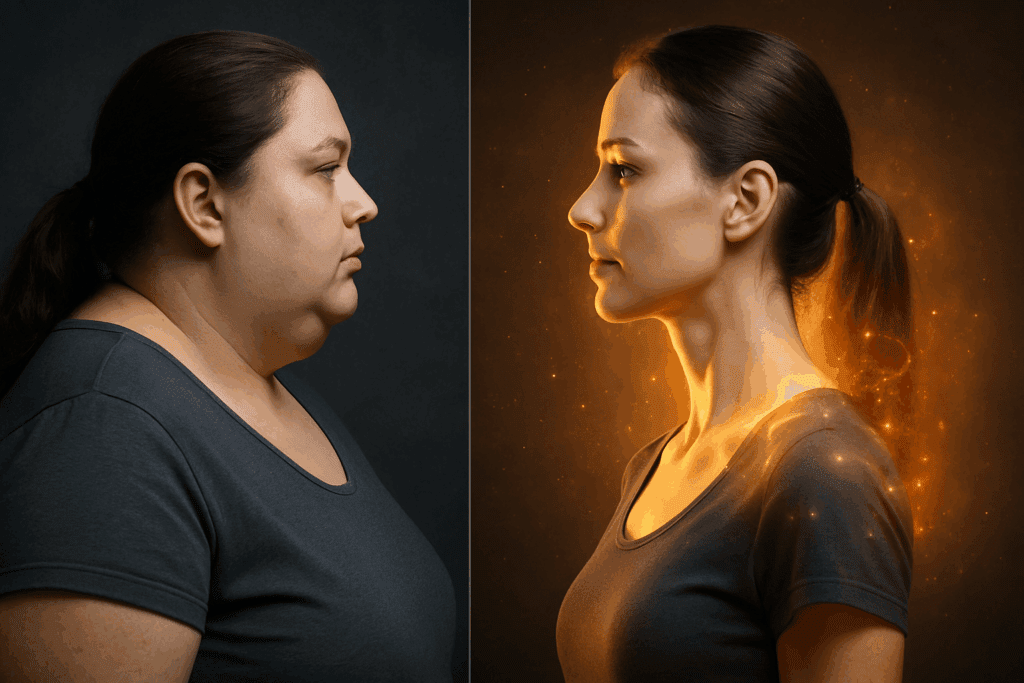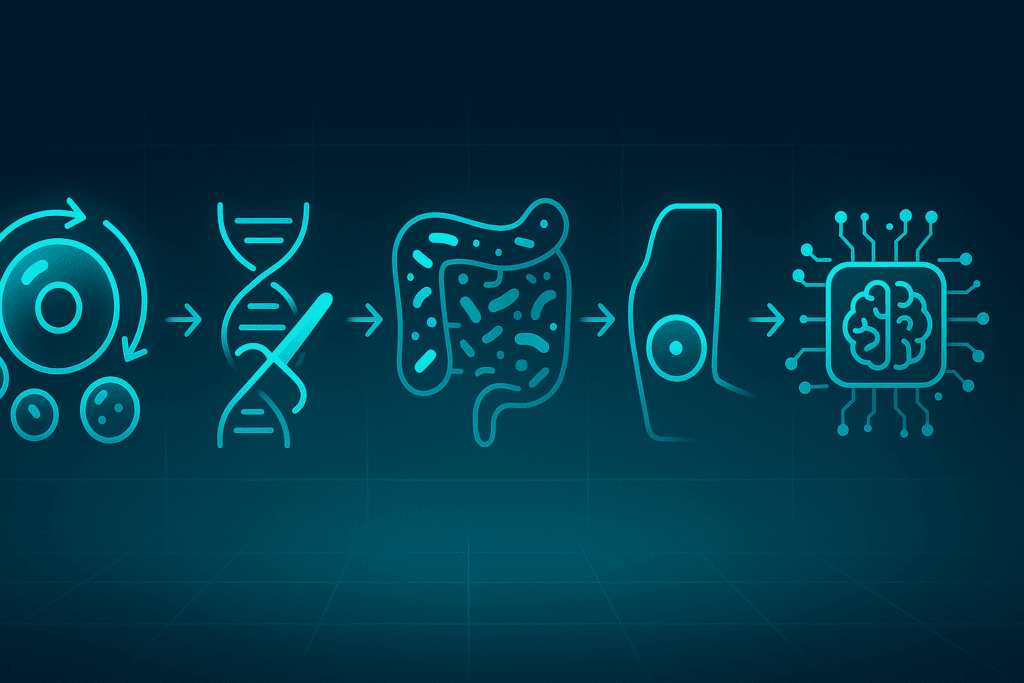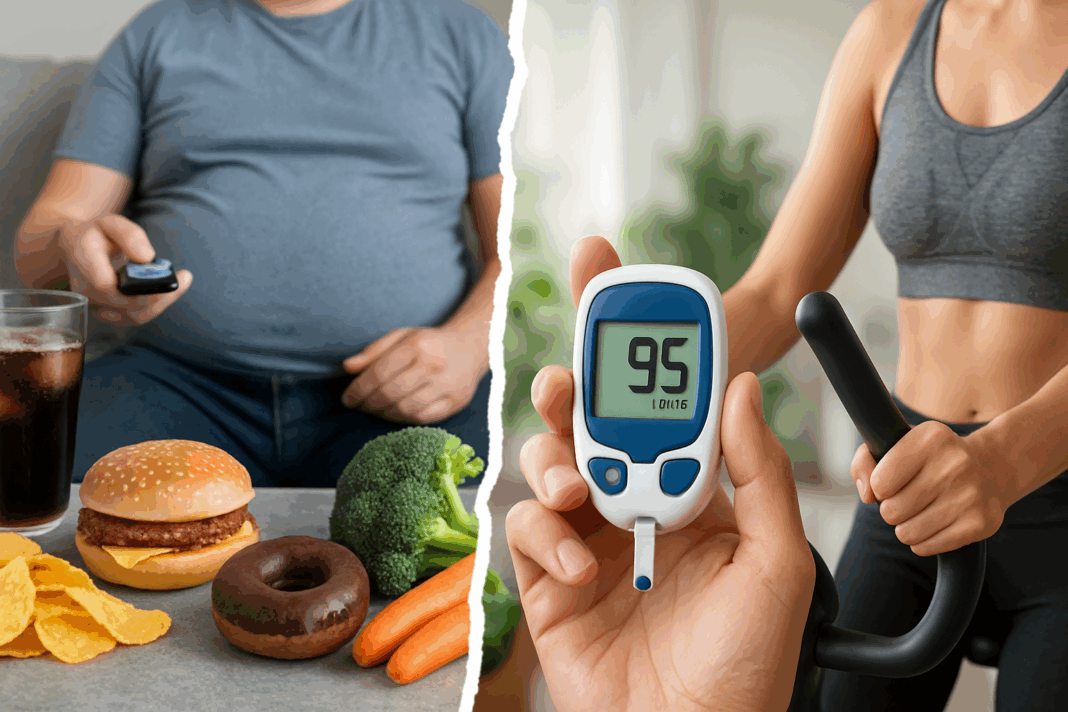Understanding the Landscape of Type 2 Diabetes: A Global Health Crisis
Type 2 diabetes has become a defining chronic illness of our era, affecting hundreds of millions of people worldwide. Characterized by insulin resistance and elevated blood sugar levels, this condition not only disrupts daily life but also increases the risk of heart disease, stroke, kidney failure, and other severe complications. As rates of obesity and sedentary lifestyles continue to rise globally, the prevalence of type 2 diabetes has soared, prompting urgent questions from patients and researchers alike: Is diabetes reversible? Can you get rid of type 2 diabetes once it’s developed? And perhaps most pressing—what does the science actually say about reversing type 2 diabetes?
You may also like: Breakthroughs in Current Diabetes Research: What the Latest Studies Reveal About Treatment and Prevention
The past decade has seen a surge of interest in the idea that type 2 diabetes is not necessarily a life sentence. Contrary to the long-held belief that it is a progressive, irreversible disease, new research suggests that for many people, it is possible to reverse type 2 diabetes through targeted, evidence-based lifestyle changes. This paradigm shift is reframing how clinicians approach the condition and how patients can take control of their health. Exploring whether a type 2 diabetes cure is on the horizon or whether we can learn how to reverse diabetes permanently requires an understanding of the complex physiological, behavioral, and environmental factors involved.

The Biological Basis: How Reversal Is Even Possible
To understand how to reverse diabetes, it’s important to grasp what causes type 2 diabetes in the first place. Insulin resistance develops when the body’s cells become less responsive to insulin, the hormone that enables glucose uptake from the bloodstream. Over time, pancreatic beta cells struggle to keep up with insulin production, leading to elevated blood sugar levels. For years, treatment focused primarily on symptom management using medications that reduce glucose levels or improve insulin sensitivity.
However, recent studies have shown that insulin resistance is not necessarily permanent. A growing body of evidence indicates that reducing liver and pancreatic fat can restore insulin sensitivity and beta cell function. This means that for some individuals, especially those in the earlier stages of the disease, reversing type 2 diabetes is a realistic and achievable goal. Scientific discussions around whether diabetes can go away or whether diabetes 2 can be reversed now hinge on this possibility of metabolic restoration.
Clinical studies led by researchers such as Professor Roy Taylor of Newcastle University have demonstrated that significant weight loss through caloric restriction can dramatically reduce intra-organ fat, leading to normalized blood glucose levels and the suspension of diabetes medications. These results underscore that reversing type 2 diabetes isn’t about suppressing symptoms—it’s about addressing the root cause and changing the trajectory of the disease.

Caloric Restriction and Weight Loss: Evidence Behind Diet-Driven Reversal
One of the most compelling breakthroughs in diabetes research came from clinical trials showing that dramatic reductions in caloric intake—often through very-low-calorie diets—can lead to remission in type 2 diabetes patients. Participants in the landmark DiRECT (Diabetes Remission Clinical Trial) study were placed on an 800-calorie-a-day meal replacement plan for 12 to 20 weeks. The results were striking: nearly half of the participants experienced diabetes remission at one year, and a significant portion maintained it at two years.
These findings highlight a crucial fact: in many cases, you can reverse type 2 diabetes by achieving and sustaining weight loss. The body’s metabolic flexibility allows it to recover from insulin resistance when excess fat is reduced from the liver and pancreas. While these interventions are not simple, and long-term adherence remains challenging, they provide compelling evidence that a diabetes cure—defined here as long-term remission without medication—is possible under specific conditions.
The question of how to reverse diabetes 2 naturally often arises in public discourse, and this research forms the backbone of that inquiry. By showing that food is not only a source of blood sugar spikes but also a powerful therapeutic tool, the scientific community has redefined the boundaries of diabetes care. Nonetheless, remission is not guaranteed for everyone, and sustained effort is required to prevent relapse, particularly if weight is regained.

The Role of Exercise: A Critical Pillar of Diabetes Reversal
While dietary changes often take center stage in conversations about reversing type 2 diabetes, physical activity plays an equally vital role. Exercise enhances insulin sensitivity by increasing the muscles’ ability to use glucose without needing as much insulin. In essence, regular movement can help counteract the underlying dysfunctions of type 2 diabetes. Emerging evidence suggests that combining aerobic and resistance training yields the most significant metabolic benefits.
The American Diabetes Association and numerous research institutions now emphasize that structured exercise programs can significantly reduce A1C levels, improve cardiovascular health, and support weight maintenance—all of which contribute to diabetes remission. When people ask, “Can type 2 diabetes go away with lifestyle change alone?” the answer increasingly leans toward yes, especially when diet and exercise are synergistically applied.
Even modest increases in daily movement, such as walking after meals or incorporating strength training sessions two to three times per week, can improve insulin sensitivity. These habits are critical not only for those seeking to reverse type 2 diabetes but also for individuals aiming to prevent the condition altogether. Whether one is pursuing a full diabetes 2 cure or looking for natural ways to control the disease, exercise is indispensable.

Intermittent Fasting and Time-Restricted Eating: A New Frontier
Beyond traditional dieting, intermittent fasting (IF) has gained attention for its potential to reverse type 2 diabetes. IF involves cycling between periods of eating and fasting, often with an 8-hour eating window followed by a 16-hour fast. This approach promotes autophagy, reduces insulin levels, and supports weight loss—all of which are beneficial for people with diabetes.
Some small-scale studies and case reports suggest that intermittent fasting can lead to substantial reductions in blood glucose levels and even medication cessation. These results have led many to explore whether this dietary pattern represents a viable route for how to reverse diabetes permanently. However, larger-scale randomized controlled trials are still needed to validate its efficacy and safety across diverse populations.
It’s important to note that intermittent fasting is not suitable for everyone, particularly individuals with certain medical conditions or those taking glucose-lowering medications that could lead to hypoglycemia during fasting periods. Nevertheless, IF remains a promising area of research and may offer an effective, flexible strategy for individuals looking to naturally reverse diabetes without lifelong dependence on pharmacological treatments.
Medication-Free Management: When Is It Possible?
A common and understandable question is, “Can you get rid of diabetes without medication?” For some people, the answer is yes—but with caveats. Medication-free remission is often possible in individuals who implement intensive lifestyle changes shortly after diagnosis. The earlier type 2 diabetes is addressed, the more likely remission can occur without ongoing drug therapy. That said, many people will require medication at some point, either temporarily during the reversal process or permanently if lifestyle changes are insufficient or implemented too late.
Pharmaceutical interventions remain an essential tool for managing blood glucose and preventing complications. Drugs such as metformin, GLP-1 receptor agonists, and SGLT2 inhibitors offer significant benefits. However, the narrative that once you get diabetes you can never get rid of it is increasingly being challenged by real-world data from patients who have achieved long-term remission without medication.
The notion of a type 2 diabetes cure should be approached with nuance. While some individuals experience remission lasting several years, ongoing vigilance is necessary. Diabetes is a condition that can return if lifestyle factors relapse. Therefore, the phrase “diabetes will be cured” must be framed within the context of sustained lifestyle commitment and regular monitoring. It’s not magic—it’s maintenance.

Genetics and Personalized Risk: Why Reversal Isn’t One-Size-Fits-All
Despite the growing optimism surrounding natural reversal strategies, it’s crucial to recognize that type 2 diabetes is a heterogeneous disease. Genetic predisposition plays a significant role, influencing how individuals respond to diet, exercise, and other interventions. Some people may struggle to lose weight or improve insulin sensitivity even with consistent effort due to inherited metabolic traits.
This variability underscores the importance of personalized care plans. While one person might reverse type 2 diabetes through intermittent fasting and moderate exercise, another may require more intensive strategies or even metabolic surgery. The idea that there is one best way to naturally reverse diabetes overlooks the complexities of individual biology.
Understanding that diabetes reversal exists along a spectrum allows for more compassionate, realistic goal setting. It also explains why some people find that even after significant lifestyle changes, their blood sugar remains elevated. These individuals are not failures; rather, they may require ongoing medical support in addition to lifestyle modifications. Acknowledging this complexity ensures that discussions about whether diabetes can go away or how to reverse diabetes 2 remain grounded in both science and empathy.

Surgical Interventions: Bariatric Surgery and Metabolic Outcomes
While often framed as a last resort, bariatric surgery has emerged as a powerful tool in the quest to reverse type 2 diabetes. Studies show that certain types of surgery—especially Roux-en-Y gastric bypass—can lead to rapid normalization of blood glucose levels, often before substantial weight loss occurs. This suggests that anatomical and hormonal changes triggered by the surgery may enhance insulin sensitivity independently of fat loss.
For patients with obesity and poorly controlled diabetes, surgery can offer a form of type 2 diabetes cure that would be difficult to achieve through diet and exercise alone. However, surgery carries risks and is not suitable for everyone. It requires lifelong follow-up, nutritional supplementation, and a readiness to change eating behaviors permanently.
Still, for eligible candidates, metabolic surgery may offer the best chance for long-term remission. The idea that you can cure diabetes in 7 days is unrealistic for most people, but in surgical contexts, rapid improvements in glucose control are well-documented. These cases provide further evidence that diabetes is reversible—when targeted appropriately and individually.
Natural Strategies That Complement Medical Care
In addition to diet and exercise, a range of natural strategies may support diabetes management and, in some cases, aid in reversal. These include stress reduction through mindfulness, adequate sleep hygiene, and the use of evidence-backed supplements like berberine or magnesium. These approaches help regulate cortisol and insulin, improve metabolic function, and enhance overall well-being.
While there is no guaranteed natural way to cure diabetes, integrating these complementary strategies into a broader lifestyle approach can improve outcomes. The phrase “naturally reverse diabetes” resonates with many patients seeking holistic, non-pharmacological interventions. However, these should never replace conventional treatment without the guidance of a qualified healthcare provider.
Efforts to discover a possible cure for diabetes are ongoing, with researchers exploring everything from beta-cell regeneration to gut microbiome modulation. For now, the most successful methods combine medically supervised care with individualized lifestyle changes. The goal is not perfection but progress—and for many, that progress leads to remission.

The Future of Diabetes Research: A Cure on the Horizon?
Science is rapidly evolving in the field of diabetes research, with multiple promising avenues under exploration. Researchers are investigating stem cell therapies that could regenerate insulin-producing cells, as well as gene-editing techniques that may one day alter the underlying genetic drivers of type 2 diabetes. Advances in wearable technology, continuous glucose monitoring, and AI-driven diagnostics are also revolutionizing diabetes care and personalizing treatment plans.
Although a definitive, one-size-fits-all diabetes ii cure remains elusive, we are edging closer to new therapeutic horizons. The phrase “can diabetes 2 go away” no longer belongs solely to the realm of hopeful speculation—it’s now part of an active scientific dialogue. With each breakthrough, we get a step closer to understanding how to reverse diabetes permanently, not just manage it temporarily.
In the meantime, the convergence of nutritional science, behavioral medicine, endocrinology, and technology is yielding powerful insights. As the evidence grows, so too does the belief that reversing type 2 diabetes is possible for many individuals—especially when they receive timely, personalized, and comprehensive care.
Frequently Asked Questions: Reversing Type 2 Diabetes Naturally and Permanently
1. Is there a difference between diabetes remission and a full diabetes cure?
Yes, there’s a significant distinction between remission and a true diabetes cure. Remission means that blood sugar levels have returned to a normal range without the use of medication, often sustained for several months or even years. However, this does not mean the disease is gone permanently. The term “diabetes cure” implies a permanent resolution, which is not yet recognized in the medical community for type 2 diabetes due to the possibility of recurrence. While many ask, “Can you get rid of diabetes?” or “Can type 2 diabetes go away for good?”, the honest answer is that long-term reversal is possible, but vigilance is necessary to sustain it.
2. How soon can you reverse type 2 diabetes after being diagnosed?
The earlier you intervene, the higher the likelihood of successful reversal. If someone acts quickly—within the first six months to a year after diagnosis—by implementing aggressive dietary and exercise changes, they may find that type 2 diabetes is reversible. This early window is when the body’s insulin-producing cells are still functioning reasonably well. While there is growing talk of a potential type 2 diabetes cure, particularly among those who lose weight rapidly or undergo metabolic surgery, early intervention remains the strongest predictor. This highlights the importance of immediate lifestyle changes for those wondering how to reverse diabetes 2 before complications arise.
3. Can type 2 diabetes be reversed without extreme dieting or fasting?
Yes, although dramatic weight loss through strict diets may accelerate results, not everyone needs to adopt such intense measures to see progress. For many, a gradual, sustainable approach that includes whole foods, portion control, and consistent physical activity can lead to meaningful improvements. Reversing type 2 diabetes naturally doesn’t require starvation or risky programs—it often depends on consistency and patience. While intermittent fasting has helped some individuals, it’s not the only path. The key for those exploring how to reverse diabetes permanently lies in personalized, manageable strategies that promote long-term adherence.
4. Are there psychological challenges in trying to reverse type 2 diabetes?
Absolutely. The emotional toll of managing a chronic disease can affect motivation, self-efficacy, and adherence to healthy behaviors. Individuals often struggle with feelings of failure when setbacks occur, particularly if weight regain or blood sugar spikes follow initial improvements. This makes it vital to address not just physical but also mental health when trying to reverse type 2 diabetes. Mindfulness-based stress reduction, cognitive behavioral therapy, and peer support can empower individuals to stay on track. If you’re asking, “Once you get diabetes can you get rid of it?”, the journey is as much psychological as it is physiological, requiring resilience and mental wellness.
5. Do certain ethnicities face more difficulty when trying to reverse type 2 diabetes?
Yes, research shows that ethnicity can influence both risk and response to treatment. South Asian, African American, and Hispanic populations tend to have a higher predisposition to insulin resistance and may require more aggressive interventions. However, this doesn’t mean that reversal is impossible—just that strategies may need to be culturally tailored. Community-based programs that align with dietary traditions and lifestyle practices have shown promising results. So, while the path to a type 2 diabetes cure may look different across populations, it remains achievable with the right support.
6. Can you reverse type 2 diabetes after having it for several years?
Reversing type 2 diabetes becomes more difficult the longer one has lived with the disease, but it’s not impossible. Even after several years, significant improvements in glucose control and reduced medication dependence are attainable. It may take more time and commitment, and in some cases, full remission might not be achievable—but meaningful progress can still be made. For those wondering if diabetes 2 can be reversed late in its course, studies show that with structured support, substantial lifestyle improvements can still occur. The concept of a diabetes 2 cure should be viewed as a spectrum rather than a binary outcome.
7. Are there new therapies on the horizon for reversing diabetes naturally?
Yes, emerging research into gut microbiota, personalized nutrition, and nutraceuticals offers promising new directions. Scientists are exploring how specific fiber types, fermented foods, and probiotics may enhance insulin sensitivity. Additionally, individualized meal planning based on genetic and metabolic profiles is gaining traction. These strategies don’t replace existing methods but may complement efforts to naturally reverse diabetes. As the field expands, more people will have access to nuanced treatments that move us closer to a viable diabetes ii cure through holistic means.
8. Can natural supplements play a role in reversing type 2 diabetes?
Natural supplements can support but not replace a comprehensive lifestyle approach. Ingredients like berberine, alpha-lipoic acid, cinnamon extract, and bitter melon have shown some promise in reducing blood sugar levels. However, results vary and should be monitored under medical supervision. People often ask, “Can you cure diabetes using supplements alone?”—but the answer is no. These tools may enhance insulin function and reduce inflammation, but reversing type 2 diabetes typically requires broader changes in diet, physical activity, and stress management.
9. What happens if you reverse type 2 diabetes but later regain weight?
Weight regain can lead to the return of insulin resistance and rising blood glucose levels, effectively reversing the remission. This does not mean the effort was wasted; many people experience cycles of remission and relapse, which are still clinically meaningful. The goal is long-term lifestyle change, not temporary fixes. Understanding that diabetes can go away under certain conditions helps patients stay motivated even when setbacks occur. So yes, while it’s possible to get rid of type 2 diabetes for a time, sustained vigilance is essential to prevent its return.
10. Is there any real hope for a permanent type 2 diabetes cure in the near future?
Hope is not only reasonable—it’s supported by cutting-edge research into beta cell regeneration, stem cell therapies, and gene editing. These scientific advances suggest that one day, a permanent cure for type 2 diabetes may be available. Until then, the phrase “how to reverse diabetes permanently” reflects an evolving goal: sustainable remission through multifaceted intervention. While some may seek a way to cure diabetes in 7 days, the reality is that lasting change requires time, effort, and scientific progress. But yes, there is a possible cure for diabetes on the horizon—and the foundation is being laid today through research and innovation.
Conclusion: Reframing Type 2 Diabetes from Chronic Sentence to Reversible Condition
The idea that type 2 diabetes is an irreversible, progressively worsening disease is no longer universally accepted. Today, the question is no longer just “Can diabetes be reversed?” but rather, “Under what conditions and for whom is reversal possible?” A growing body of research confirms that type 2 diabetes remission is achievable through a combination of intensive lifestyle changes, timely intervention, and, for some, medical or surgical treatment.
This shift in understanding is not about giving false hope—it’s about empowering people with evidence-based strategies and realistic expectations. Whether someone is exploring how to reverse diabetes 2 through intermittent fasting, wondering if they can get rid of diabetes without medication, or seeking a type 2 diabetes cure through bariatric surgery, the central message remains consistent: change is possible, and the path to reversal is more accessible than once believed.
Ultimately, while no universal cure exists yet, the tools we have today—rooted in science and bolstered by emerging research—offer a powerful arsenal for those seeking to naturally reverse diabetes. As awareness spreads and more individuals adopt sustainable habits, the future looks brighter. What once seemed like an inevitable decline now holds the possibility of restoration, hope, and health regained.
Further Reading:
Can You Reverse Type 2 Diabetes?
Intermittent fasting may reverse type 2 diabetes
Disclaimer
The information contained in this article is provided for general informational purposes only and is not intended to serve as medical, legal, or professional advice. While MedNewsPedia strives to present accurate, up-to-date, and reliable content, no warranty or guarantee, expressed or implied, is made regarding the completeness, accuracy, or adequacy of the information provided. Readers are strongly advised to seek the guidance of a qualified healthcare provider or other relevant professionals before acting on any information contained in this article. MedNewsPedia, its authors, editors, and contributors expressly disclaim any liability for any damages, losses, or consequences arising directly or indirectly from the use, interpretation, or reliance on any information presented herein. The views and opinions expressed in this article are those of the author(s) and do not necessarily reflect the official policies or positions of MedNewsPedia.


